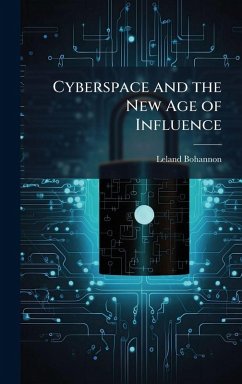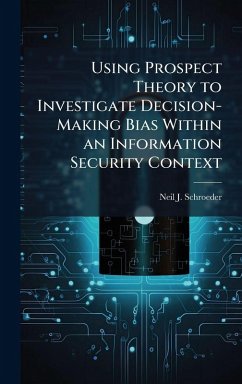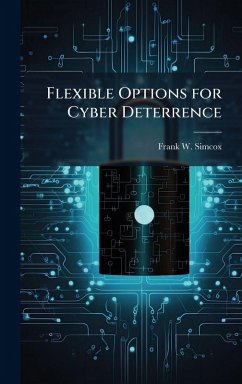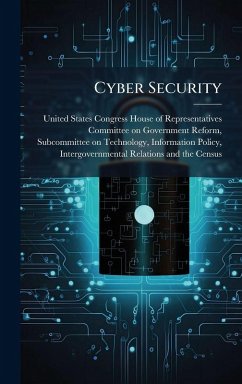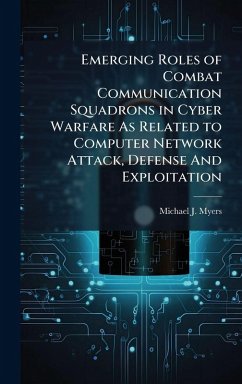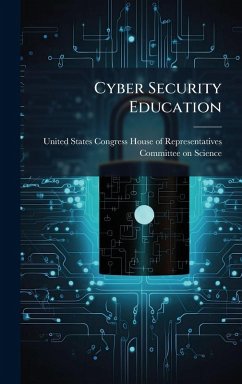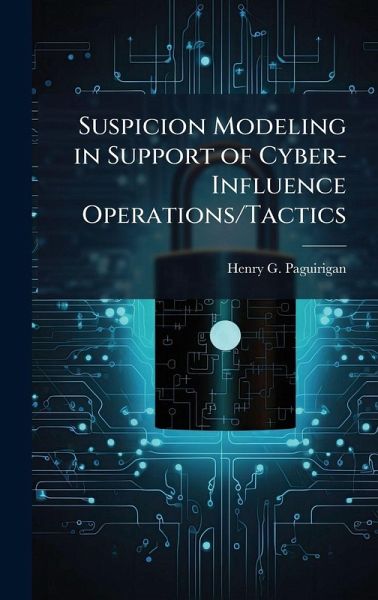
Suspicion Modeling in Support of Cyber-Influence Operations/Tactics
Versandkostenfrei!
Versandfertig in über 4 Wochen
29,99 €
inkl. MwSt.
Weitere Ausgaben:

PAYBACK Punkte
15 °P sammeln!
Understanding the cognitive process of IT user suspicion may assist organizations in development of network protection plans, personnel training, and tools necessary to identify and mitigate nefarious intrusions IT systems. Exploration of a conceptual common ground between psycho-social and technology-related concepts of suspicion are the heart of this investigation. The complexities involvedd in merging these perspectivess led to the overall questrion: What is the nature of the suspicion towrds IT? The research problem/ phenomenon wasaddress via extensive liteaturereview, and use of the Inter...
Understanding the cognitive process of IT user suspicion may assist organizations in development of network protection plans, personnel training, and tools necessary to identify and mitigate nefarious intrusions IT systems. Exploration of a conceptual common ground between psycho-social and technology-related concepts of suspicion are the heart of this investigation. The complexities involvedd in merging these perspectivess led to the overall questrion: What is the nature of the suspicion towrds IT? The research problem/ phenomenon wasaddress via extensive liteaturereview, and use of the Interactvie Qualitative Analysis methodogly. A problem/phenomenon. Analysis of the system led tot he development of a model of IT suspicion as a progenitor for future experimental constructs that measure or assess behavior as a result of cyber attacks. This work has been selected by scholars as being culturally important, and is part of the knowledge base of civilization as we know it. This work was reproduced from the original artifact, and remains as true to the original work as possible. Therefore, you will see the original copyright references, library stamps (as most of these works have been housed in our most important libraries around the world), and other notations in the work. This work is in the public domain in the United States of America, and possibly other nations. Within the United States, you may freely copy and distribute this work, as no entity (individual or corporate) has a copyright on the body of the work. As a reproduction of a historical artifact, this work may contain missing or blurred pages, poor pictures, errant marks, etc. Scholars believe, and we concur, that this work is important enough to be preserved, reproduced, and made generally available to the public. We appreciate your support of the preservation process, and thank you for being an important part of keeping this knowledge alive and relevant.



